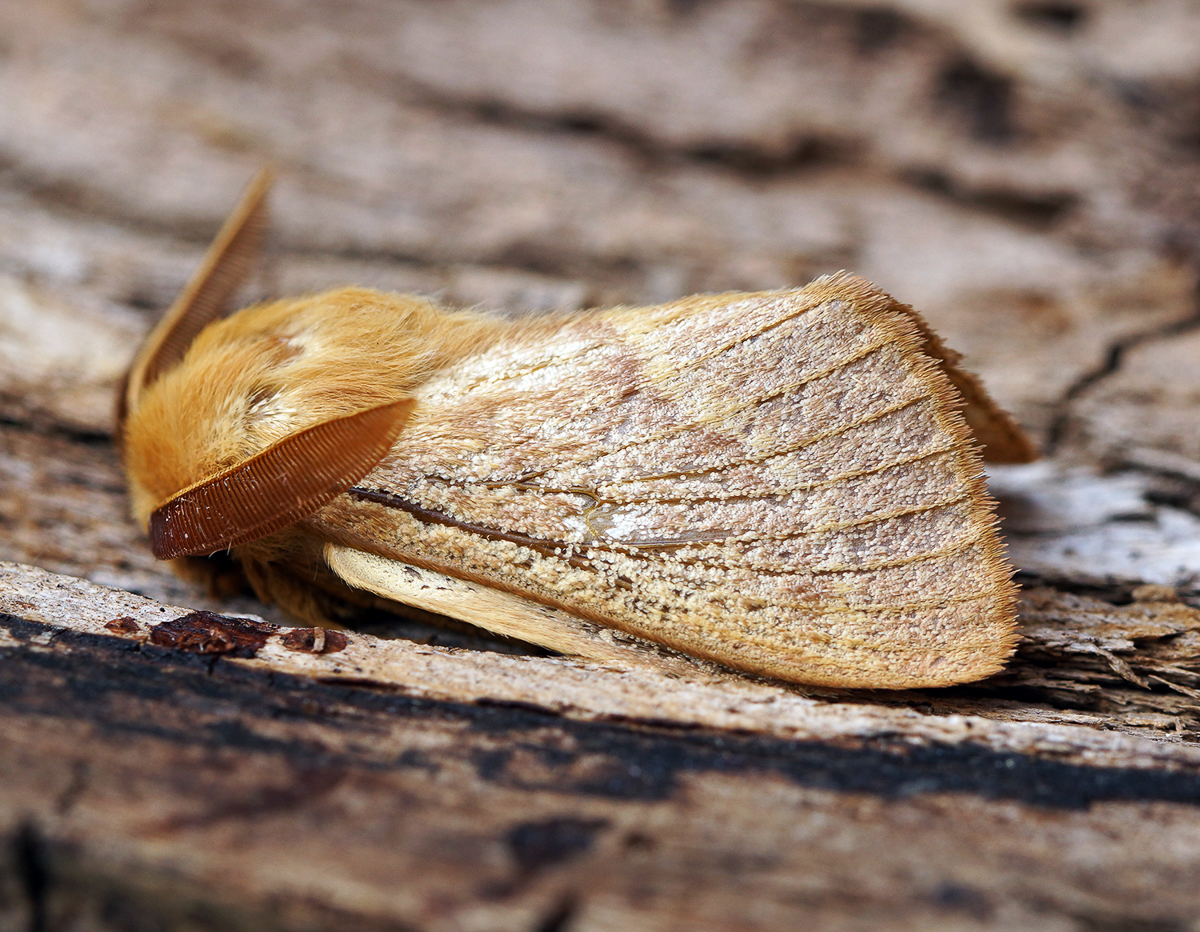
Photo © Ben Sale
Lasiocampa trifolii, the grass eggar, is a moth of the family Lasiocampidae first described by Michael Denis and Ignaz Schiffermüller in 1775 and found in Europe.
It is found in Europe in coastal dunes.
Eggs are laid on leaves close to the ground, hatch in the autumn, and the young larvae hibernate. The larvae feed on grasses, various shrubs and deciduous trees, such as oak, European beech, poplar and Calluna. The cocoon is formed on the ground.
Adults' wingspan is 40–55 mm and it flies from June to September depending on the location (in Britain it is on the wing in August). They fly during the day, but also at night, and will come to a light. The female is larger than the male.
Source: Wikipedia
The primary larval foodplants are Blackthorn (Prunus spinosa), Bramble (Rubus fruticosus), Broom (Cytisus scoparius), clovers (Trifolium spp.), Common Bird's-foot-trefoil (Lotus corniculatus), Creeping Willow (Salix repens), False Oat-grass (Arrhenatherum elatius), Gorse (Ulex europaeus), Heather (Calluna vulgaris), Kidney Vetch (Anthyllis vulneraria), Lucerne (Medicago sativa ssp. sativa), Marram (Ammophila arenaria), Ribbed Melilot (Melilotus officinalis), Sheep's Sorrel (Rumex acetosella), Sickle Medick (Medicago sativa), Spiny Restharrow (Ononis spinosa), Thrift (Armeria maritima), Tree Lupin (Lupinus arboreus), Wild Plum (Prunus domestica) and willows (Salix spp.).